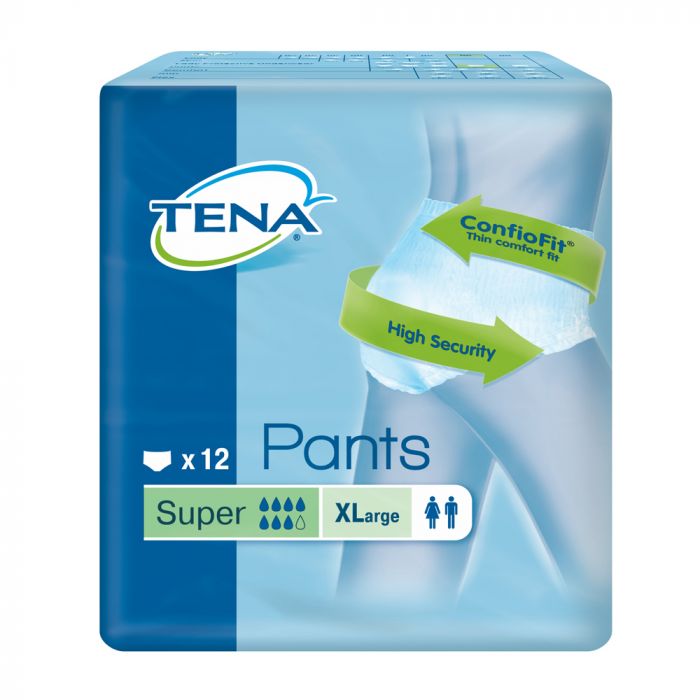Incontinence can often be difficult for residents, particularly those with Dementia, to successfully manage. It is vital that staff are educated on how to provide residents with the perfect products. Here are some important tips to take into account when choosing the correct incontinence products for residents:
Before deciding which product is suitable for a resident, you should first identify the type of incontinence the resident is suffering from.
The types of incontinence that your resident may be suffering from are as follows:
Urge incontinence
urge incontinence is a condition when urine leaks as you feel a sudden, intense urge to pass urine, or soon afterwards. Urge incontinence can often be caused by a stroke, Dementia, Alzheimer’s disease, multiple sclerosis, Parkinson’s or other injuries.
Overflow incontinence is when you are unable to fully empty your bladder, which causes frequent leaking. Sufferers frequently feel the need to go and often leak small amounts of urine. This condition is often caused by an obstruction in the urinary tract system or by a bladder that either has very weak contractions or is unable to contract at all. Causes include an enlarged prostate or damage from prostate surgery, constipation, faecal impaction, and nerve damage fromstrokes or diabetes.
Total incontinence – this is a condition where your bladder can’t store any urine at all, which causes you to pass urine constantly or have frequent leaking.
Work out the heaviness of the resident’s incontinence.
Pay attention to how much your resident drinks and how many accidents they have during the day to help you work out the size of the incontinence pad they should be using. The average bladder holds a similar amount of liquid to a can of drink. If you take a look at how much your resident drinks and how often they experience leaks, you should be able to assign a suitable working absorbency for your resident. This will ensure the individual remains dry and comfortable between changes. Consider additional medication that your resident takes that may affect the amount of urine they pass during the day and night, as this might cause peak times of heavier urination. If this is the case, you may need to provide a pad with maximum absorbency so your resident is prepared for those times. Never use an incontinence pad with too high a level of absorbency, as this will strip the skin of moisture, causing it to become dry and irritated.
Choose products that feature a wetness indicator.
It is useful to choose an incontinence pad with a wetness indicator so that you and the resident are able to see when the pad requires changing. This will save time and prevent any leakages from happening that may cause embarrassment and confusion for the resident. Pads often have an ‘indicator strip’ running through the pad that changes colour when the pad is wet and needs changing. This is particularly useful for residents who rely on other people for pad changing. This helps to ensure that their pad is changed at appropriate times and reduces the likelihood of the pad overfilling and leaking onto clothing.
Always chooseincontinence pads with a breathable back.
Plastic backing can raise the temperatureinside the pad to 55°C. Breathable backing enables the air flow to maximise skin integrity and will provide your resident with a feeling of control. Breathable back sheets can also prevent further leakages from happening and keep your residents more confident and relaxed knowing that they have extra protection.
Consider whether the resident is fully mobile or has limited mobility.
For those who are fully mobile then disposable pull up incontinence pants offer the best solution as these can be pulled up and down just like normal underwear but offer the security of a built in pad. For quick and easy removal, they have side tears. As they are like normal underwear, the product can be put on by the wearer quickly and easily. Never allow residents to use pull-ups only at night as they tend to leak when the resident moves around in bed, so make sure you use an appropriate incontinence pad instead.
Tena Pull Up Pants Super
Elderly women with good mobility are likely to prefer smaller pads which they change more frequently. Men and women who are less mobile and need help changing pads may prefer the security of larger pads even if they are only leaking small amounts of urine as larger pads require changing less frequently.
Visit our range of incontinence pads here.
Additional tips for providing residents with incontinence products:
Make sure you review each resident’s incontinence care plan once a year to ensure that you meet any changing requirements. Of course, if you notice that a different sized pad is needed in between reviews then make that change immediately.
Keep different sized pads close by for residents to choose depending on the activity they are doing.
You should fit an incontinence pad from front to back to prevent cross infection unless the product is designed to be fitted from back to front.
Find more information on providing person-centred incontinence care
